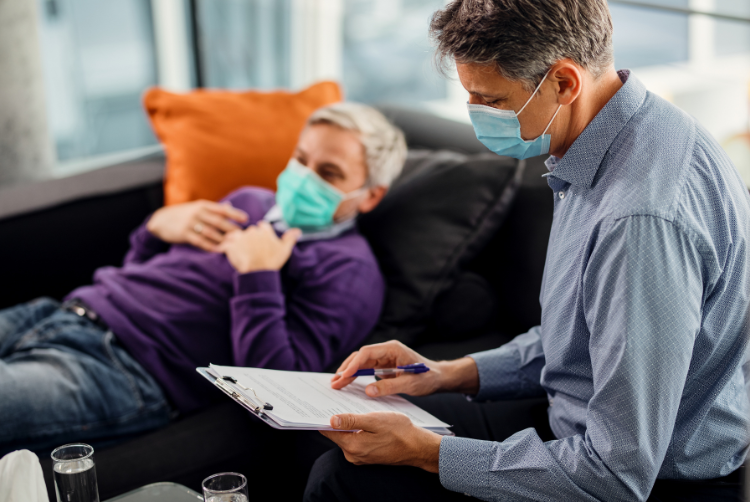🧠 What is a Home Sleep Study?
A Home Sleep Study, also called a Home Sleep Apnea Test (HSAT), is a simple test done at home to evaluate your breathing during sleep. It helps in diagnosing obstructive sleep apnea, a condition where breathing stops or becomes shallow repeatedly during sleep.
This test uses a small device that records your breathing patterns, oxygen levels, and heart rate while you sleep. Unlike an in-laboratory sleep study, this test does not monitor brain waves or body movements.
🎯 Purpose of the Test
Your doctor may recommend a home sleep study if you have symptoms such as:
- Loud and regular snoring
- Gasping or choking during sleep
- Feeling very sleepy during the day
- Waking up tired despite a full night's sleep
🧰 What’s Included in the Test Kit?
You will receive a portable testing device that may include:
- A small recorder worn on the chest or near the body
- A nasal cannula or sensor to measure airflow from the nose
- A belt around the chest or abdomen to track breathing effort
- A pulse oximeter on the finger to measure oxygen levels and heart rate
🕑 Instructions for the Test Night
Before Sleep:
- Avoid alcohol, caffeine, and heavy meals on the day of the test.
- Don’t nap during the day.
- Take your regular medications unless your doctor advises otherwise.
- Make sure the device is fully charged (if applicable).
Setting Up the Equipment:
- Wear loose-fitting clothing (like a t-shirt) for comfort and easy placement of sensors.
- Attach the chest or abdominal belt snugly around your body.
- Place the nasal cannula gently into your nostrils and secure it.
- Attach the pulse oximeter to your finger.
- Start the recording device as per the instructions provided.
🌙 While You Sleep:
- Sleep as normally as possible in your usual position.
- Try not to remove or move the sensors during the night.
- Aim to get at least 6 hours of sleep for accurate results.

🌅 After the Test:
- Remove the sensors and switch off the device.
- Return the equipment to the sleep clinic or courier it back as instructed.
- Do not wash or alter any device parts.
🧾 What Happens Next?
- Your test data will be downloaded and analyzed by a sleep specialist.
- Your doctor will discuss the results with you and explain any findings.
- If sleep apnea is diagnosed, treatment options such as CPAP therapy, weight management, or lifestyle changes may be recommended.
📌 Important Reminders:
- Contact the sleep clinic if you have questions or face problems with the device.
- Do not attempt to repair or modify the equipment on your own.
- If you are unwell on the night of the test, inform the clinic to reschedule.
✅ Benefits of a Home Sleep Study:
- Comfortable: You sleep in your own bed.
- Convenient: No overnight hospital stay required.
- Accurate: Effective for detecting moderate to severe sleep apnea.
- Affordable: Less costly than a full sleep lab study.
⚠️ Limitations:
- It does not record brain activity or sleep stages.
- Not suitable for complex sleep disorders or other health conditions.
- It may need to be repeated if the data is insufficient or the test fails.
🔔 Please follow all instructions carefully for a successful sleep test. Accurate results depend on proper use of the equipment.
